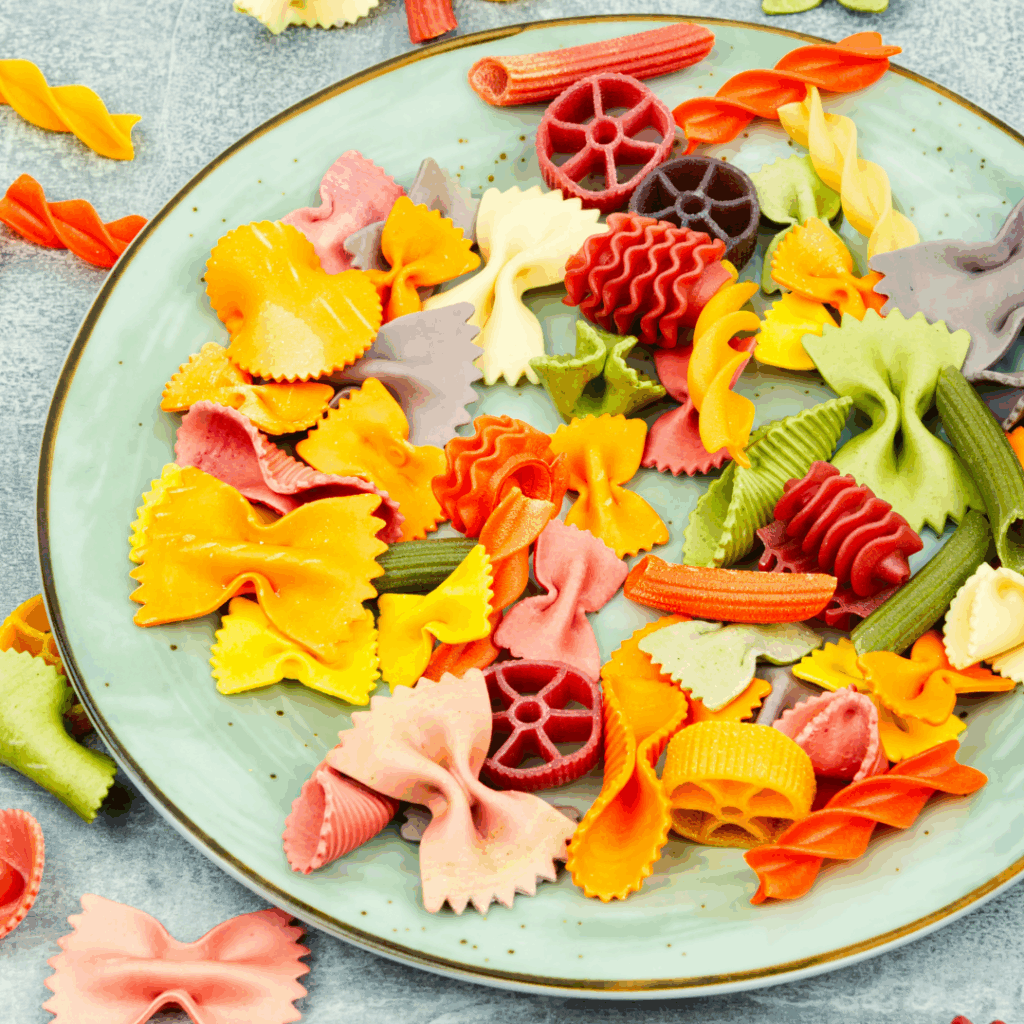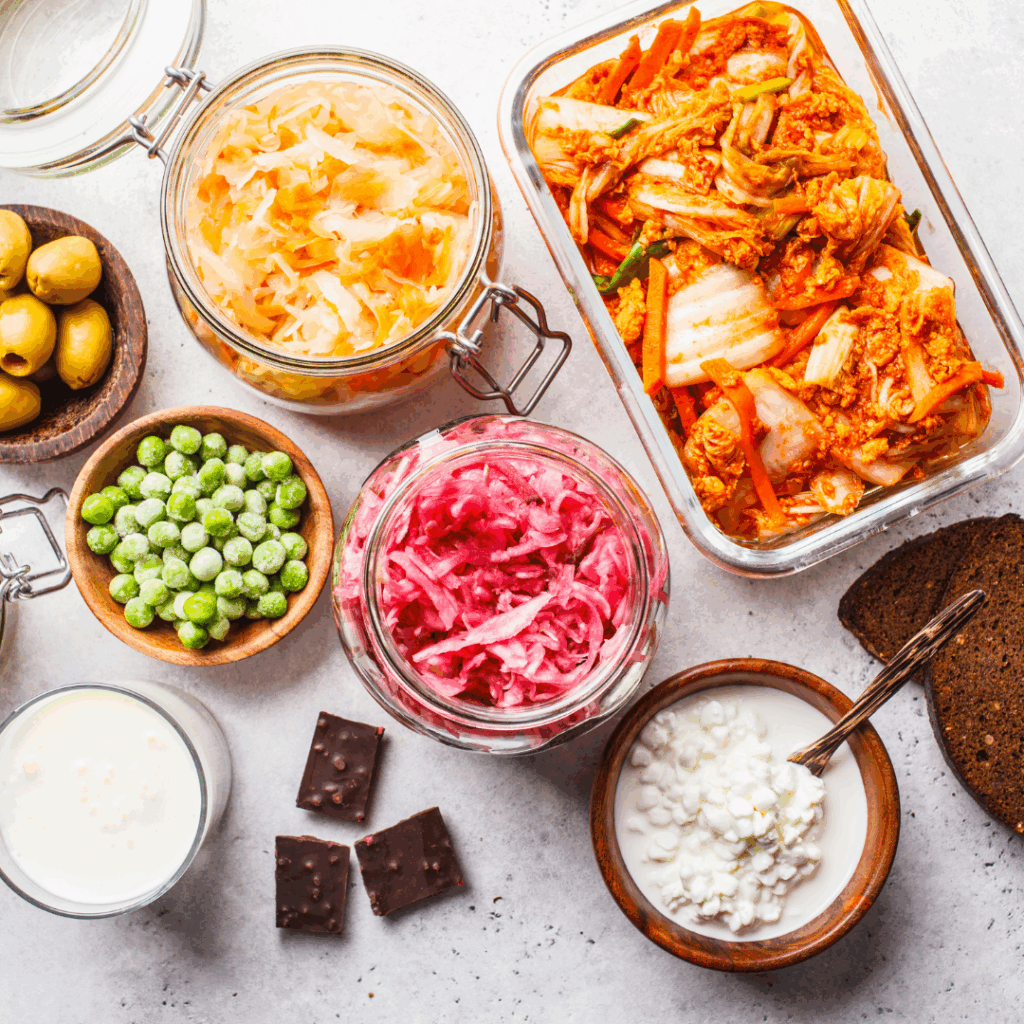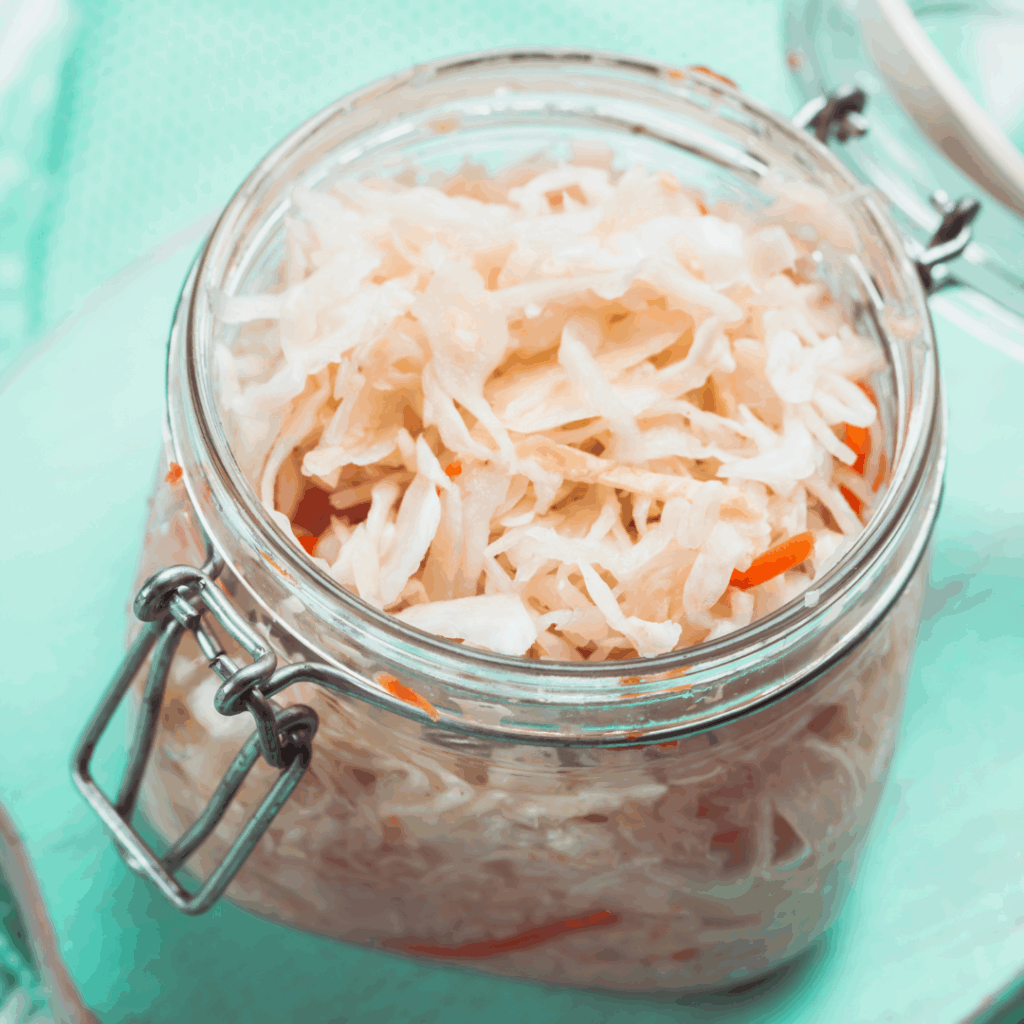This is My Little Eater’s all-inclusive starting solids guide with up-to-date research, evidence-based tips, and answers to all of the most frequently asked questions from parents in this stage.
We also bust through outdated guidelines that just won’t seem to go away!
In the end, you’ll have all of the best practices for safely introducing solids in a way that ensures proper nutrition and prevents picky eating while fostering a healthy relationship with solid foods. It’s all backed by the expert team at My Little Eater including registered pediatric dietitians and a speech-language pathologist.
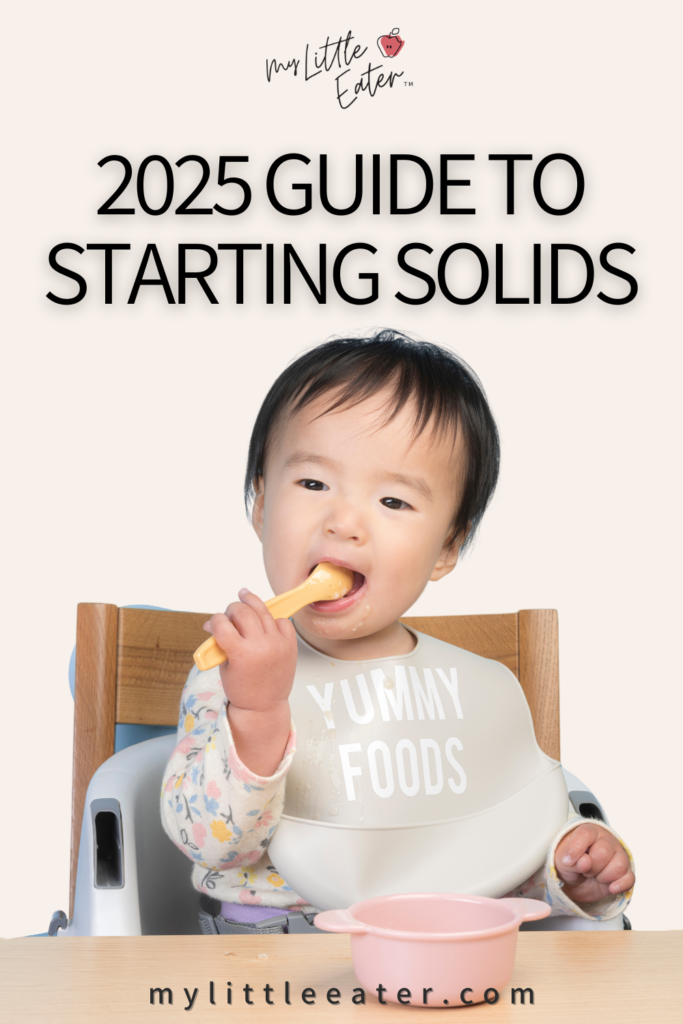
For those looking to introduce solids in a step-by-step manner (starting with purées and moving into finger foods in a way that’s not scary or too rushed), be sure to sign up for our FREE workshop called Baby Led Weaning…but make it purées! How to move from purées to finger foods – without the fear!
Table of Contents
We know how hard it is to find reliable information on starting solids with so much on the internet and so many conflicting opinions – even if it comes from doctors or dietitians. Unfortunately, guidelines are always changing and unless you specialize in feeding in particular (rather than generalized health or pediatric care), it’s incredibly hard to keep up with all recommendations and best practices, which results in outdated information being given.
Of course, we also all know about many non-credentialed people on the internet who are giving out information as well (even extremely unsafe suggestions!). At My Little Eater, we only share reliable, trustworthy info that we’ve researched extensively – so let’s bust a common myth first!
Food before 1 is not just for fun
You’ve likely heard the outdated and potentially harmful expression “Food before one is just for fun…”.
And before we dive into the foundations of starting solids with your little one, it’s crucial that you understand that this is not true.
Food before one has many benefits and is absolutely important for nutritional and developmental reasons.

That doesn’t mean it can’t be fun! But it does mean that we can’t just skip over it or ignore issues when they come up because “it doesn’t matter”. It does matter, and it can have a significant impact on your baby.
For example, babies need iron and they can’t get enough from breast milk or formula. If your baby isn’t able to eat or swallow because they aren’t getting enough practice with solids…they won’t be able to take in enough iron. And that can impact their health and development.
For more examples read our blog on why food before one is NOT for fun.
When to start introducing solids to baby
Solid foods should be started when your baby shows all of the developmental signs of readiness. Not before, and not just because of the date on the calendar.
For most babies, this is somewhere around 6 months of age. It can vary from baby to baby, some will be ready around 5.5 months while others need to wait until 6.5 months. What you’re looking for is your baby’s ability to do each of the following things.

They…
- Can sit in an upright position independently
- Have strong control of their head and neck
- Open their mouth when food is offered
- Show interest in food and mealtimes
- Have a reduced tongue thrust reflex (allowing them to swallow food rather than push it back out)
- And are able to reach for and bring large objects to their mouth
No 4 or 5-month-old baby truly shows all of these developmental signs of readiness, so solids should not be introduced at that age – even purees.
Where the confusion comes from
The American Academy of Pediatrics guidelines are very confusing. In many places, it states that it’s ok to start solids between 4-6 months of age.
In others, it agrees with the World Health Organization that only breast milk or infant formula should be offered to babies exclusively for the first 6 months of life, after which, solids can be introduced.
Finally, Health Canada agrees that solids should only be introduced around 6 months of age.
Let’s be clear.
From a nutritional perspective, there is absolutely no need to start solids earlier than 6 months of age.
What about premature babies?
For babies who were born prematurely, we want to go by their adjusted age. This means no earlier than around 6 months of age – adjusted.
Again, look for the readiness signs that indicate they can safely begin. These should line up with the correct approximate age.
This is also very important for babies with any other developmental delays, such as Down syndrome.

High-risk babies
The one exception to the rule that babies don’t nutritionally need anything but breast milk or formula before 6 months are babies who have a high risk for developing food allergies.
These babies may benefit from being introduced to the top allergenic foods earlier (around 4 months of age), in small quantities, and under the supervision of an allergist.
This doesn’t necessarily mean that all solid food should be introduced and regular daily meals be provided at 4 months of age. Instead, it’s a strategic exposure to the proteins that they may be at higher risk of reacting to down the road – only.
Learn more about what we mean by high-risk babies.
Choosing a method for introducing solid foods
Purées
In this method, solids are introduced to babies in the form of smooth or mashed purées on a spoon, fed to them by their parent or caregiver.
Let’s be clear about two things.
- Spoon feeding is a totally fine and appropriate way to start, especially for parents who want to ease into the process, and who may need some time to overcome fears of gagging or choking.
- Purées are also great for babies who aren’t showing a desire to feed themselves until a few weeks into introducing solid foods.

That said, the period of offering exclusively smooth puréed baby food should last no more than a few days to a couple of weeks. This is based on your baby’s feeding cues and readiness to move on.
From there, you may decide to offer purées that are thicker, lumpier, and more varied for a few weeks after that – and that’s ok! Easing into solids more slowly can be the preferred method for many and there’s nothing wrong with taking the slow and steady route.
What’s most important to know is that babies should move through more textured purées and slowly start incorporating easier to more advanced finger foods using our Texture Timeline™ by no later than 9 months of age.
This will help keep oral motor skills progressing in a timely manner and ensure picky eating prevention.

If the thought of this freaks you out, make sure you register for our free workshop where we teach you all about using our gradual method to move at a pace that you feel comfortable with.
Finger Foods
Some parents prefer to start by letting their baby self-feed on large, whole finger foods from day 1 – a method called baby led weaning. This is also a perfectly appropriate way of starting solids and is shown to be just as safe as purée feeding when parents and caregivers are educated on how to safely prepare and modify foods (1). Parents who are less fearful of starting solids may find this easy to jump into.
This is also great for babies who show more signs of independence at the table by wanting to feed themselves from day 1. Finally, it works well as a way to fast-track oral motor skill development.
This doesn’t mean that purées are skipped altogether – rather – naturally puréed foods are incorporated amongst other table foods the rest of the family is eating.

Important Note
Important Note
Both purée feeding and baby led weaning can be done in a way that’s not ideal.
This is particularly true when any of the following occurs:
- Parents keep their baby stuck on the same texture of foods for too long (this goes for purées or finger foods).
- Parents ignore their baby’s cues to eat according to their appetite (it is possible to pressure babies to eat with both methods).
- Parents don’t allow opportunities to advance in self-feeding skills.
- The family mealtime environment isn’t set up in an ideal way.
By 9 months of age, babies who started on purées and babies who started on finger foods should be at the same place in terms of what they eat and the development of their eating skills.
Texture Timeline™
This is a tool exclusive to My Little Eater that allows you to start solids with your baby using purées, finger foods, or a mixture of both. We sort all foods into different phases of the timeline based on texture difficulty, presenting multiple ways to serve each food depending on what you and your baby are ready for.
You can start with any phase of the Texture Timeline™. The goal is to always be moving forward on the timeline so that you can advance your baby to more challenging textures in a timely manner. This will allow your baby to develop and practice new eating skills and ensure that they don’t stay stuck on one texture for too long.

Using the Texture Timeline™ can help to prevent picky eating, all while keeping the feeding process enjoyable and less stressful for you because you can ease into the difficult textures that often cause more anxiety and worry.
This is arguably the most effective tool available for following a baby led method without increasing anxiety and fear around choking.
There are two people in the feeding equation – you and your baby. Both of your needs are equally important.
Our Texture Timeline™ Tool is the only available method that respects this feeding relationship while continually pushing you to move forward to ensure your baby’s eating skills develop as they should and how your baby needs them to.
To get an in-depth look at the timeline and how to use it, sign up for our free workshop where we walk you through it all while tackling some of the common misconceptions around feeding babies.
Best practices for serving purees & finger foods
Believe it or not, there are best practices when it comes to introducing purées to babies using our baby led feeding method (it’s not always as simple as putting a spoon of baby food in their mouth).
We want to make sure the process takes into account that we are being very responsive to our baby’s cues, respecting hunger signals, keeping mealtime pleasant, as well as encouraging self-feeding as soon as they show more signs of independence. We also really want to make sure our baby is advancing in textures in a timely manner, which the Texture Timeline™ can help with.

Learn more about responsive spoon feeding.
When it comes to how to serve finger foods, it’s easy to say that they need to be served in large finger shapes, but honestly, there are exceptions to that. It’s the combination of the food texture, shape, and size that all need to be considered to determine exactly what the safest way is to serve it to your baby.
Every food is different.

That’s why we created a Texture Timeline™ Food Video Library inside our Baby Led Feeding Program that allows you to search for any food and see exactly how to serve it based on different phases (i.e. difficulty levels) of the Texture Timeline™.
You’ll see how your baby should be served the food based on their stage of development, and get tons of nutrition information on each food, allergy info, fun facts, recipes, and more!
Generally speaking, we want food to pass the “squish test”. This is the ability to easily squish food down between your thumb and forefinger which mimics the pressure of your baby’s gums on food.
Learn more about choosing the best size and shape of foods to serve your baby.
First foods for starting solids
Babies are in high need of getting iron from solid foods. The iron stores in their body start to slowly deplete around 6 months of age, and the human body isn’t capable of producing iron on its own.
That’s why focusing on high-iron foods as a daily option for babies is very important for preventing iron deficiency.
Iron-fortified baby cereal (such as rice cereal) has traditionally been the most common first food for babies around the world. While this is fine, there is no need to introduce this as a first food (or at all).

Babies don’t need bland foods, they don’t need purées first, and they also have a range of other high-iron foods to choose from that provide the nutrition they do need.
Rice and rice products are also known to contain high levels of inorganic arsenic. When consumed daily and/or multiple times per day, this can be toxic, especially for babies and toddlers. Our recommendation is to offer rice products more sparingly (i.e. don’t rely on only rice cereal for iron) and amongst a range of other foods. Always consider how you can give your baby more variety.
Babies can eat grains and starches, fruits and vegetables, meat, beans and pulses, soy, dairy, and more from day one of eating solid foods. There’s no need to introduce food in any special order or “ease” babies into solids and flavors by only offering one at a time.
Spices are another excellent way to add variety and broaden the types of food your baby will accept over time.

Some great first foods for babies include:
- Chicken
- Beef
- Eggs
- Avocado
- Sweet potato
- Potato
- Steamed apples
- Ripe pear
- Oats
- Wheat or lentil-based pasta
- Plain, full-fat yogurt
- Sardines
- Broccoli
- Berries
As you can see, no one specific food is the perfect food to start with…because once again, variety is what we’re aiming for.

If you want more ideas plus a complete meal plan with grocery lists and recipes, our 60 day Baby Led Feeding meal plan is for you. It strategically introduces your baby to all of the top allergens, allows you to move through textures, and every single meal is dietitian-approved to ensure your baby is getting all the nutrients they need.
Key principles for choosing your baby's food
Maximize variety between 6-9 months of age
An outdated concept that isn’t backed by any proper reasoning or research, is the rule of waiting a few days in between offering new foods. The original idea for this recommendation was to be able to rule out any allergic reactions to different foods your baby was eating.
In fact, this is still a recommendation from the American Academy of Pediatrics – but it’s based on tradition, not reasoning.
What we DO know is that babies have a critical period between 6-9 months of age where they develop taste and texture preferences (2). We want to introduce our baby to as many different foods (i.e. flavors and textures) as possible during this time.

If we were to wait 3-5 days between introducing each and every food, they’d be off to an extremely slow start when it comes to variety as compared to having multiple new foods each day.
The exception to this is for foods that are identified as top allergens. Continue reading to learn more about this in the next section.
The biggest thing to remember with texture variation specifically is to introduce more challenging textures either right away, or as soon as your baby shows signs that they’re ready for them. This includes finger foods too!
All too often, parents are stuck on easy pasta shapes, rice rusks, eggs, sweet potato, and banana as finger foods, and fail to expand into the multitude of other more varied and advanced textures. It’s these more difficult (yet safe) textures that help babies develop their oral motor skills during the critical period between 6-9 months of age.
The Texture Timeline™ Tool is perfect for ensuring that your baby is continually moving forward to try more difficult textures as they’re ready to do so.
If you’re feeling stuck on how to move on from simple purées, and/or how to overcome your fear of gagging or choking on finger foods, register for our FREE workshop. We’ll show you our signature Texture Timeline™ while busting the most common myths about starting solids.

Introduce allergenic foods early and often
Allergenic foods should be introduced as early into the starting solids journey as possible (and continue to be served often) to reduce the risk of developing food allergies to those foods (3).
The top potentially allergenic foods are dairy, soy, wheat, eggs, fish, shellfish, peanuts, tree nuts, sesame, and mustard.

These foods should be introduced in isolation from one another but can be offered alongside other non-highly allergenic foods in the same meal or on the same day. This allows you to pinpoint which food likely caused a food allergy should an allergic reaction occur.
Learn more about the proper protocol for allergy introduction.
Be aware of choking hazards
It’s extremely important to thoroughly review all of the choking hazards for babies before offering any solids for the first time. The choking hazards are the same, whether offering purées or finger foods, because as mentioned previously, we don’t want to become stuck on purées and should only be using them for a short time.
Understanding the choking hazards before you begin ensures you’re prepared as you start to transition to serving foods other than purées.

The top choking hazards (in no particular order) are as follows:
- Hard, raw vegetables and fruit
- Uncooked leafy greens
- Large pieces of dried fruit
- Whole grapes, cherry tomatoes, and small berries
- Foods with small pits and round shapes (like cherries and olives)
- Whole nuts and large seeds (like pumpkin and sunflower seeds)
- Chewy candies, gummies, marshmallows, and chewing gum
- Small bones in fish (except canned sardines) and meat
- Thick globs of nut and seed butter
- Fresh, soft bread (for children <18 months)
- Large pieces of tough meat (like steak) once babies can bite pieces off
- Chips, popcorn, and dry crackers (get our free cracker guide to know the safe options available by age)
- Stick-shaped foods like cheese strings and hot dogs

Of course, this doesn’t mean you have to avoid all of these foods completely. Many can be modified to be served safely, and teaching your baby how to chew these more difficult foods as they enter toddlerhood is important for building on their skills and continuing to offer variety. Our Baby Led Feeding Program shows you exactly how to do this while keeping your baby’s safety top of mind.
Learn all about these various choking hazards and how to modify them for safety (if they can be modified).
Avoid these foods for babies
Honey
Honey needs to be completely avoided in ALL forms – unpasteurized, pasteurized, and even when it has been baked or cooked into another product.
This is because honey can contain spores of bacteria that cause infant botulism. These spores can have a serious impact on your baby’s health.

Cooking a food that contains honey is not enough to get rid of the spores. For this reason, it’s imperative that you check all ingredient labels for honey and avoid any products that contain it for babies under 12 months old.
High mercury fish
This is another group of foods that should be completely avoided for babies. The highest mercury fish include king mackerel, swordfish, shark, marlin, tilefish, and fresh or frozen tuna. High amounts of mercury can be dangerous for your baby’s developing brain and nervous system.
For the most thoroughly researched guidelines on the safest and healthiest fish for babies and the frequency with which to offer them to avoid the negative consequences, read our article on the safest fish for babies and toddlers.
Highly processed foods
This includes foods like bacon, deli meats, fast food, hot dogs, chips, etc. All of these contain additives and nitrates and are also often high in sodium and sugar.

Excess salt
We want to be mindful of how much added salt babies get – but this doesn’t mean you can’t add a touch of salt to your baby’s meals.

It just means avoiding unnecessary salt from processed foods, which can add up fast if you prime their palates for these foods by offering them.
For the best information on what the salt guidelines actually are, and why we can have a little more freedom with salt in your baby’s diet than previously thought – read our blog on salt for babies for all the research-backed info.
Added sugars
These can be found in many foods and drinks like fruit juice, soda, molasses, agave, syrups, table sugar, candy, desserts, sweets, etc! Natural sugars like those found in fruit or plain yogurt are not included in this list.

Of course, the first-year cake smash is an exception to this, along with the lick of an ice cream cone (which is not the end of the world) but just try to be conscious of it overall!
How much should your baby eat?
A baby’s appetite for solids will fluctuate based on the baby and the day. What we never want to do is try to “get” a specific amount of food into our baby, ever.
There are some guidelines around how to know how much is ok and we included them inside our free portion guide for babies.
What we do want to see is babies who learn to fill up on solids more and more over a period of a couple of months. This is so that by 9 months of age, your baby is able to…
- Eat 3 meals per day.
- Eat a variety of textures and finger foods.
- Chew and swallow a variety of foods that have been safely modified, without much trouble manipulating them in their mouth.
- Fill up on solids at mealtime.
If you’re wondering when to end mealtimes or how long a mealtime should last for your baby, read our blog on the ideal length of meals for babies for all the details.

Successful & safe eating environments
Sit and eat with your baby at mealtime
Babies learn to eat by watching you eat. Plain and simple.
It’s important to try your best to sit with your baby during mealtimes, and if you can, eat what they’re eating (or at least eat something in front of them). This is ideal because it allows your baby the opportunity to mimic your movements which is one of the best ways that they learn how to do new things.

Remove distractions
It’s also important to take away anything that will draw your baby’s attention away from the task at hand. Learning to eat solid foods requires a lot of concentration!
Removing distractions like toys, TV, iPads, eating in front of too many people, dogs, etc. keeps babies more mindful, reduces unwanted mealtime behavior, and helps them learn faster and easier than when they’re being pulled out of focus by distractions.
Give them space
Don’t hover over your baby.
There’s a fine line between paying attention to see if your baby needs help and if they’re safe and getting some playful interaction with you…and hovering over them, over-encouraging them to eat, micromanaging the meal, and watching their every move.
Give them space, and let them be a participant at mealtime – not the focus.

Ensure proper seating
Seat them in a proper high chair and make sure they’re seated upright. Many high chairs have babies in a slightly reclined position, which isn’t safe for eating. We need babies to be sitting completely upright, with their torso and legs at 90 degrees to each other.
We also want babies to ideally have a footrest that allows their feet to lay flat at 90 degrees to the ankles. If you’re unsure which high chair to get, check out our high chair buying guide for our top recommendations.
To find all the in-depth, research-backed info for starting solids in one place, and to get access to our signature Texture Timeline™ that has been tried and tested by thousands of parents, sign up for our Baby Led Feeding Program!
Learn all about starting solids the way that you and your baby want to start, and about how to continue to advance your baby in textures from there.

Helpful? Pin it to save for later!
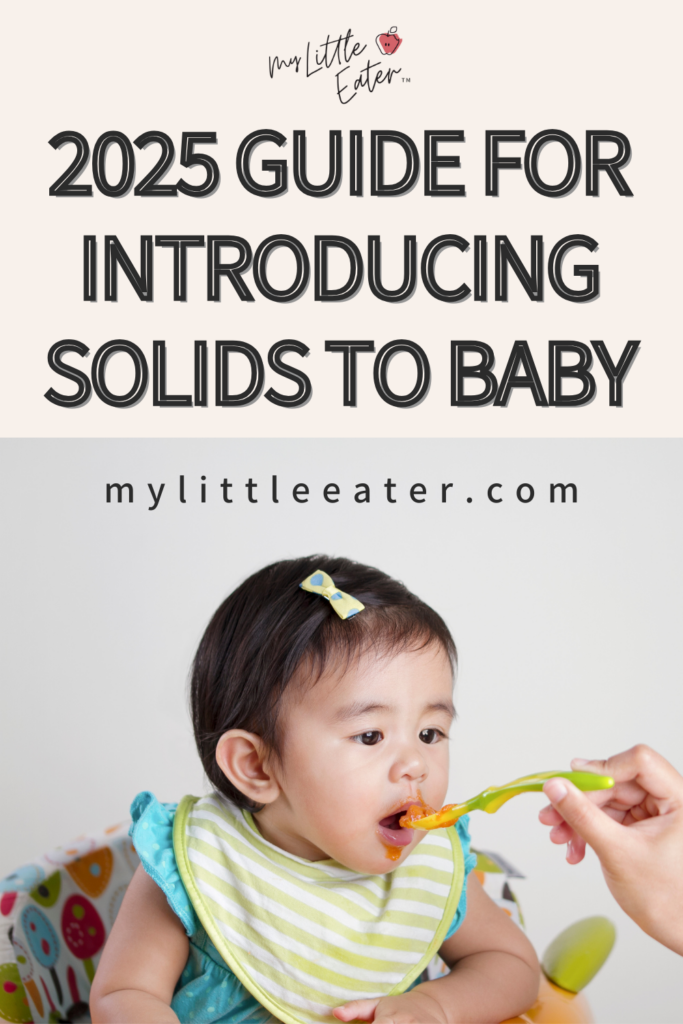
References
- Taylor RW, Williams SM, Fangupo LJ, et al. Effect of a Baby-Led Approach to Complementary Feeding on Infant Growth and Overweight: A Randomized Clinical Trial. JAMA Pediatr. 2017;171(9):838–846. doi:10.1001/jamapediatrics.2017.1284
- Harris, G., Mason, S. Are There Sensitive Periods for Food Acceptance in Infancy?. Curr Nutr Rep 6, 190–196 (2017). https://doi.org/10.1007/s13668-017-0203-0
- https://cps.ca/en/media/introduce-complementary-foods-earlier-to-prevent-allergy-paediatricians

EDWENA KENNEDY, RD
Founder and lead Registered Pediatric Dietitian at My Little Eater Inc., creator of The Texture Timeline™, and mom of two picky-turned-adventurous eaters.

EDWENA KENNEDY, RD
Founder and lead Registered Pediatric Dietitian at My Little Eater Inc., creator of The Texture Timeline™, and mom of two picky-turned-adventurous eaters.
